What Causes Tunnel Vision (Peripheral Vision Loss)

Reviewed by
Beck Jinnette
Disclaimer: We at SmartBuyGlasses are not medical doctors. This article contains general advice. If you experience tunnel vision, please consult your doctor or an eye care professional for treatment.
What is tunnel vision or PVL?
Tunnel vision, also known as Peripheral Vision Loss (PVL), is a medical condition where an individual experiences a narrowed field of vision. This condition can occur due to various reasons, such as optic nerve damage or brain injuries.
When tunnel vision occurs, people may find it difficult to see objects on the peripheries of their field of vision and might have trouble with activities that require them to scan their surroundings.
While for some individuals, tunnel vision develops over time, others may experience it suddenly due to an underlying medical condition. Although it’s not always treatable, there are various aids and treatments available to help people with PVL cope with the changes in their vision.
What is an example of tunnel vision?
Tunnel vision is a term used to describe a type of visual impairment where the individual’s side vision is severely reduced, resulting in a narrow visual field. This can lead to a person feeling as though they are looking through a tunnel, with everything outside the tunnel being blurry or completely out of sight.
What causes tunnel vision?
The causes of tunnel vision or tubular vision can vary from person to person and can be brought about by both physical and psychological factors. Physically, it can be caused by eye diseases such as glaucoma, cataracts or retinitis pigmentosa, among others.
On the other hand, psychological causes such as panic attacks can also trigger tunnel vision as a way of the body protecting itself from a perceived threat.
Migraine
Migraines can cause a range of visual disturbances, including tunnel vision, compromised vision on one side or total vision loss. Migraines can result from various ocular and nervous stimuli and can last anywhere from 10 minutes to multiple hours.
Retinal detachment
Retinal detachment occurs when the retina, located at the back of the eye, separates from the underlying tissue. The optic nerve, responsible for transmitting visual information to the brain, is directly impacted by retinal detachment, resulting in tunnel vision. Any changes in vision should be immediately evaluated by an eye care professional through a comprehensive dilated eye exam.
Glaucoma
Glaucoma is a medical condition that affects the eyes. It is caused by a buildup of pressure from excess fluid within the eye, which can result in peripheral vision loss. Glaucoma can lead to loss of vision if it’s not diagnosed and treated early.
Stroke
A stroke is a medical condition that occurs when the blood supply to part of the brain is reduced. It can happen when blood vessels in the brain are blocked. One of the first symptoms of a stroke is loss to peripheral vision, resulting in a concentration on the central visual field.
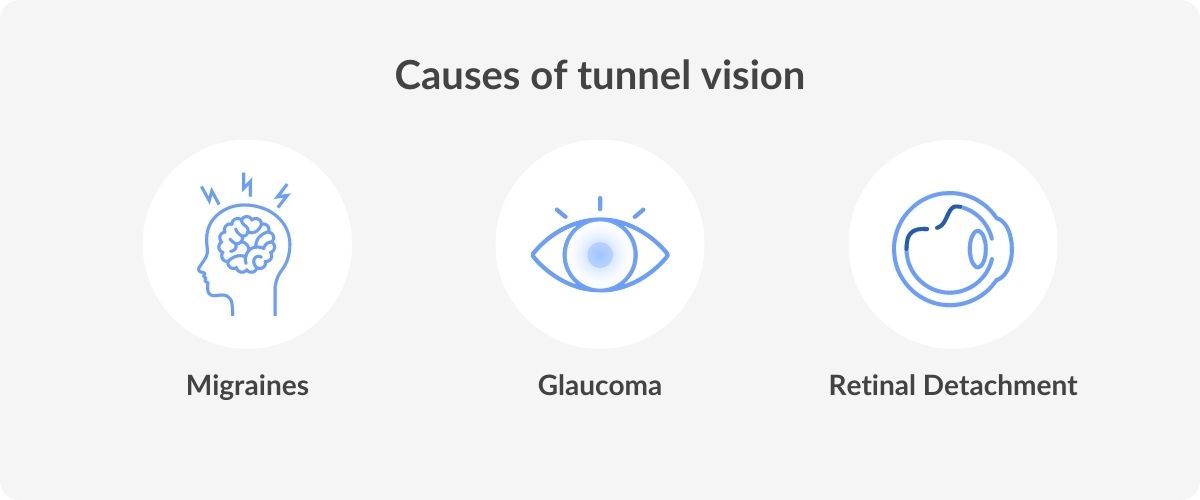
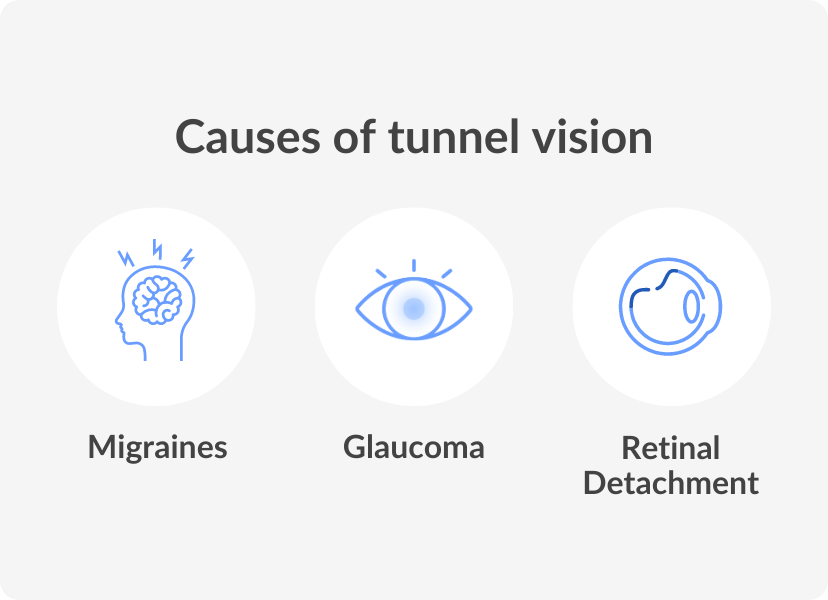
Symptoms of tunnel vision
Tunnel vision affects an individual’s peripheral vision, causing them to see only a narrow channel while the rest of the surroundings become blurred or invisible. The symptoms are usually gradual and can go unnoticed at first.
If you start experiencing visual disturbances such as difficulty focusing on objects that are outside of your central vision, altered night vision or are having a hard time adjusting to dim lights, you may be experiencing tunnel vision symptoms.
Other symptoms include eye fatigue and headaches, especially when trying to focus for an extended period. In extreme cases, tunnel vision can cause a complete loss of peripheral vision, resulting in difficulty with balance. It is vital to consult a specialist or eye doctor if you believe you may be experiencing tunnel vision symptoms.
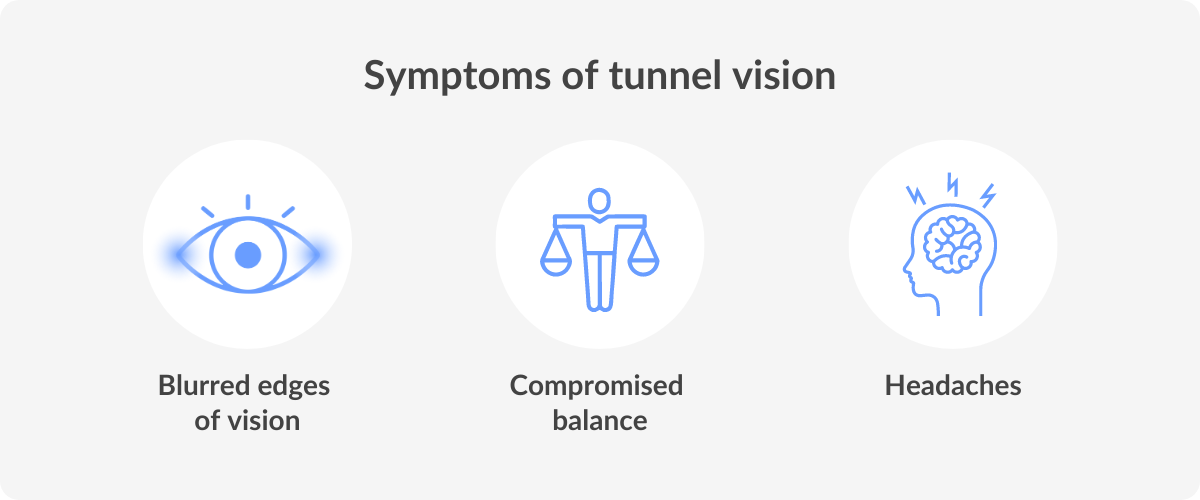

Is tunnel vision a symptom of anxiety?
When it comes to anxiety, there are a multitude of symptoms that can manifest themselves in different ways. One of these symptoms that people may experience is tunnel vision. It is important to remember that it is a common symptom of anxiety and can be managed with the right tools and techniques.
These could include things like deep breathing exercises, meditation or talking to a mental health professional to work through the root causes of your anxiety. Overall, it is important to remember that tunnel vision is just one symptom of anxiety and with the right support and resources, you can learn to manage and overcome it.
How do you treat tunnel vision?
We recommend that you consult your eyecare professional to discuss the treatment of tunnel vision as there are many factors to consider. Overall, when your doctor decides a course of treatment for tunnel vision, they will address the underlying cause.
Depending on the cause, they may recommend medications, surgery or lifestyle changes. For example, if your tunnel vision is caused by high blood pressure, you may be prescribed medication to control your blood pressure.
If it is caused by a migraine, your doctor may recommend migraine medication or lifestyle changes such as reducing stress, eating a healthy diet and getting regular exercise. Whatever the cause may be, it is vital to seek medical attention. This can be a serious condition so your doctor will take a course of action to suit the severity of your case.
DID YOU KNOW?
Tunnel vision is caused by a number of health problems. Addressing the cause of this visual disturbance as soon as possible will help you make a faster recovery.
Is PVL or tunnel vision permanent?
The good news is PVL does not usually result in permanent vision loss. It’s a transient condition that occurs due to a variety of causes. It’s not uncommon to experience PVL or tunnel vision during high-pressure situations like exams or job interviews.
However, it’s important to seek medical help if you experience PVL or tunnel vision frequently, as it could be a symptom of an underlying medical condition. Remember, taking care of your mental and physical health is extremely important and seeking professional help when needed is nothing to be ashamed of.
How to reduce the risk of tunnel vision
Our eyesight is precious and it’s important to take steps to protect it. One potential threat to healthy vision is tunnel vision. Fortunately, there are steps you can take to reduce the risk of developing tunnel vision.
Firstly, make sure you know your family’s eye health history and visit the eye doctor regularly. Secondly, ensure that your workspace is well-lit, as dimly lit environments can cause undue strain on your eyes.
Finally, consider a well-balanced and nutritious diet with plenty of eye-healthy vitamins and make lifestyle choices to optimise personal health, such as avoiding smoking.
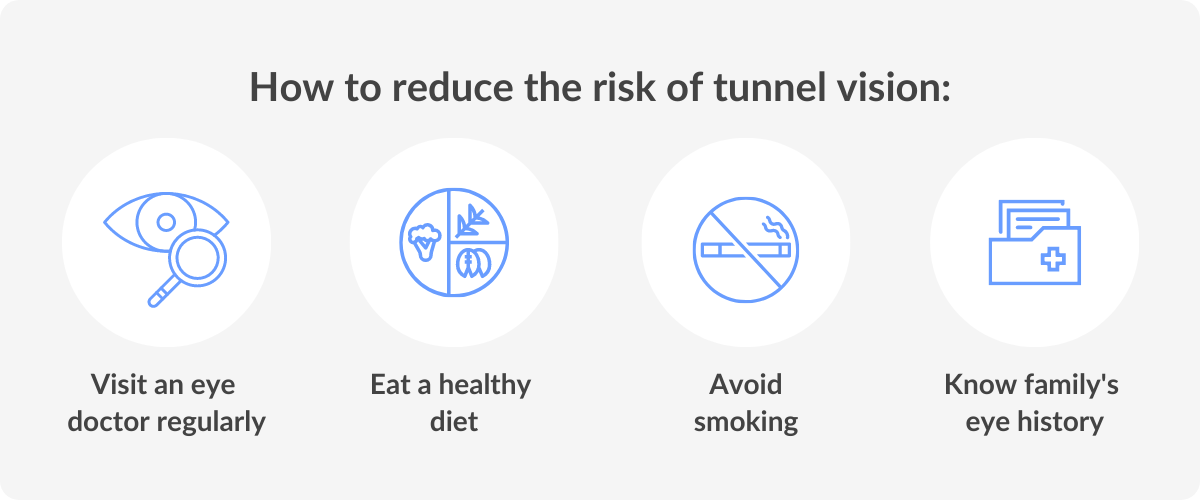
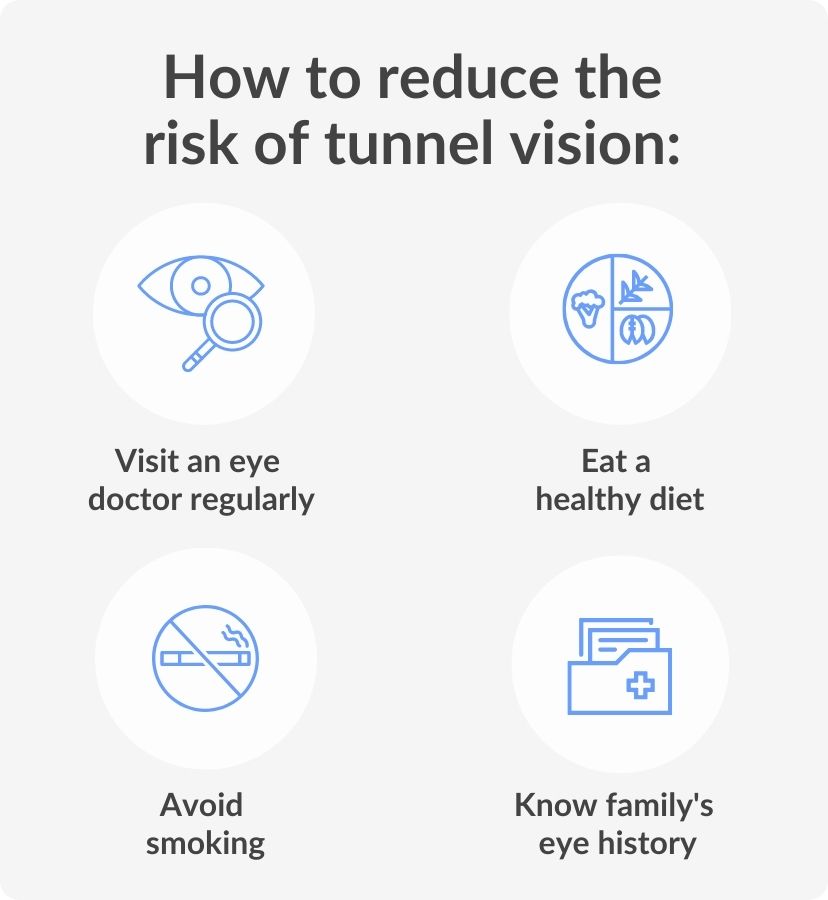
When to see a professional
Seeking help early on can often make the biggest difference in long-term outcomes. If you’re experiencing persistent symptoms or concerns that are affecting your daily life, it’s worth reaching out to a professional as soon as possible for support.
They can help you better understand your condition and provide appropriate treatments or referrals to specialists if necessary. At SmartBuyGlasses Optical Centre, we are here to reassure you with the facts so you can make informed choices about your health before visiting a doctor.




































